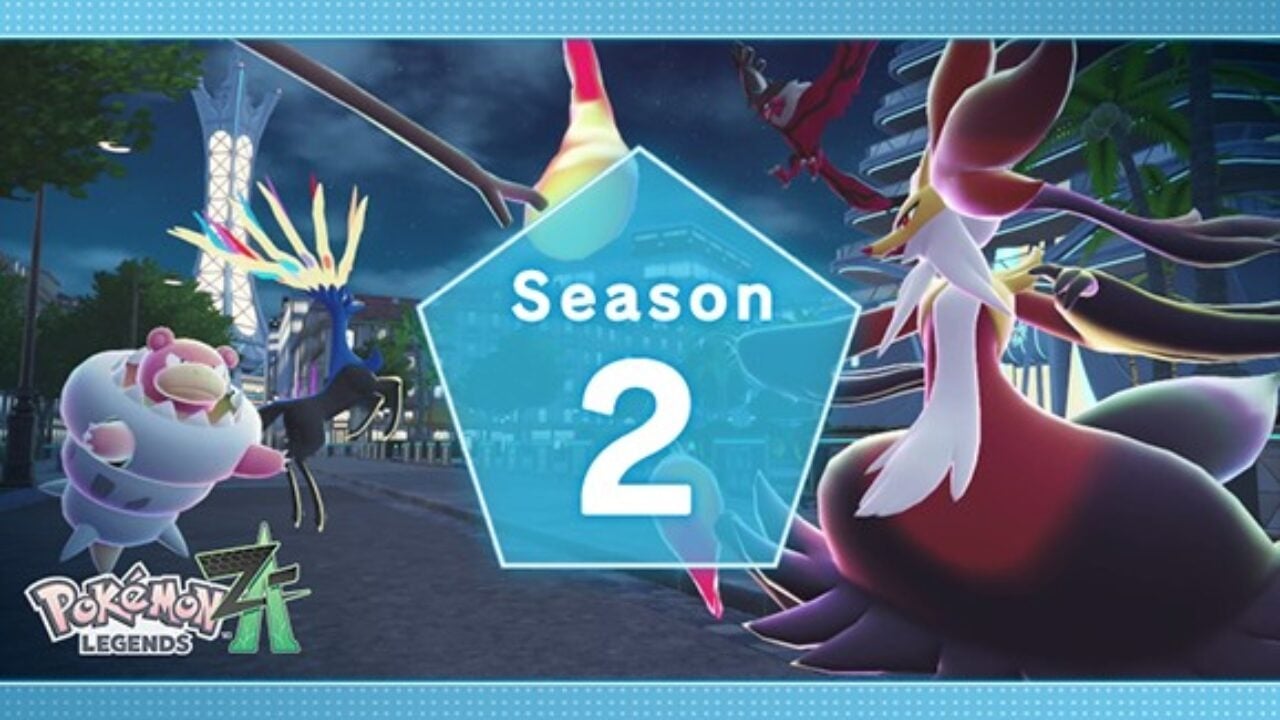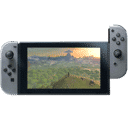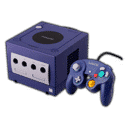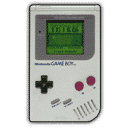
Summary:
Season 2 of Ranked Battles in Pokémon Legends Z-A kicks off on November 6, 2025 and runs through late November, bringing a fresh reward track and two headline prizes: Delphoxite at Rank S and a rerun of Greninjite at Rank Y. Players who finish at Rank E or higher will also receive Dream Balls as part of the end-of-season distribution, while the ruleset opens the door to Xerneas and Yveltal and continues to ban Zygarde. We walk through start times, what’s new versus Season 1, how to navigate four-player, real-time skirmishes, and practical routes to secure Rank S and Rank Y without burning out. Expect straightforward builds that thrive in chaotic free-for-alls, role examples that help teams cover key matchups, and simple patterns for capitalizing on KO windows, on-map opportunities, and aura-based pressure. We also cover how to use your Dream Balls intelligently and how to adapt once the meta shifts in the second week. If you’re after Mega Delphox and a second shot at Mega Greninja, this is your window—and it’s more achievable than it looks with the right plan.
What’s new in Pokemon Legends Z-A Ranked Battle Season 2
Season 2 lands right after the first ladder wraps, and the headline change is all about Mega rewards. We can now earn Delphoxite by reaching Rank S, and there’s a limited-time rerun of Greninjite at Rank Y for anyone who missed Season 1. That alone makes participation worthwhile, even if you skipped competitive play last time. Adding to the shake-up, Xerneas and Yveltal join the legal pool, which immediately nudges the balance around Fairy, Dark, and Flying pressure. Zygarde, on the other hand, stays on the sidelines, keeping certain ground-centric and Thousand Arrows-style game plans from overtaking the format. Beyond legendary eligibility, the end-of-season prize bundle pivots to Dream Balls for players ending at Rank E or better, offering collector appeal and practical catching power for your broader journey. The format remains four-player, real-time combat where knockout count matters most, so sharp timing and opportunism often trump raw stat stacking. If Season 1 felt like an introduction, Season 2 is the moment to secure two coveted Mega Stones and stock up on useful rewards without grinding for weeks on end.
Start date, end date, and key time conversions
Season 2 begins on Thursday, November 6, 2025, with the start window hitting 06:00 UTC. For Europe that’s 07:00 CET, a breakfast-friendly kickoff if you’re eager to jump in before work or school. The season runs until Wednesday, November 26, 2025 at 05:59 UTC, which effectively gives you a three-week runway to climb. If you prefer late-night sessions, the North American window aligns with 10:00 p.m. PST the night before, so you can sneak in early matches when queues tend to be calmer. As in Season 1, all levels standardize to 50 to keep things fair, so you can focus on role coverage, KO timing, and map awareness rather than obsessing over level gaps. Mark those dates on your calendar and try to play at least twice: once during the first 72 hours to bank early momentum, and again in the final weekend when players return for push goals and you can pick off more predictable patterns.
Reward highlights: Delphoxite at Rank S and Greninjite at Rank Y
The prize structure is clear and friendly: hit Rank S to claim Delphoxite, unlocking Mega Delphox for teams that lean on special damage spikes, control, and tempo swings. If you didn’t secure Greninjite during Season 1, Rank Y makes that stone available again, a fair rerun for anyone who joined late or just missed the original window. This two-track approach eases pressure—chasing Rank S can be your stretch goal while Rank Y serves as a safety net that still pays off in a big way. Because ranks in Z-A are performance-driven and relatively accessible, most players can reach at least Y without marathon sessions. Season 2’s rerun policy also hints at an ongoing pattern: if you miss something now, odds are you’ll get another chance later, but it’s always faster to grab it when the ladder is active.
Full reward breakdown and what’s different from Season 1
Season 2’s end-of-season bundles center on Dream Balls for Rank E and above, a shift from Season 1’s ball distribution and a nice win for players who like collecting rare variants. Higher ranks layer in training items such as Gold Bottle Caps and Bottle Caps, plus currency items like Nuggets and Big Nuggets. The philosophy is simple: even if you don’t aim for top ranks, finishing solidly pays out with items that matter in day-to-day play. The presence of Dream Balls in particular nudges many of us to at least maintain Rank E by the finish, since those balls are hard to source elsewhere and feel great to use on special catches. Keep an eye on how many matches you need to lock your floor ranking—pacing matters more than squeezing out every last battle.
Eligibility rules: Lumiose Pokédex range, level sync, and species limits
Only Pokémon listed as No. 001–229 in the Lumiose Pokédex participate this season, and while you can register anything from level 1 to 100, the system forces everything to level 50 in battle. Regional forms are allowed, but you can’t stack duplicates of the same species. Taken together, those rules concentrate the meta around a manageable slice of the roster while ensuring a level playing field. Instead of brute-forcing stats, success comes from role coverage and timing—bring tools that punish overextended enemies, move quickly between skirmishes, and deny clean resets. Because it’s four-player chaos, single-target dueling isn’t the whole story; area control and KO stealing matter just as much. Lean into that reality rather than fighting it.
Why Xerneas and Yveltal matter, and how to use them responsibly
Welcoming Xerneas and Yveltal opens two powerful axes at once. Xerneas introduces Fairy pressure that punishes Dark, Dragon, and Fighting staples, while its presence forces opponents to respect Moonblast-style threats and aura setups. Yveltal brings Dark and Flying coverage with great pick potential, especially against foes clumped near objectives or trading blows in mid-range. Neither legendary auto-wins fights; both require smart positioning, shift awareness, and a team that can capitalize on the space they create. For Xerneas, prioritize partners that either soften targets for clean KO confirms or wall off counter-threats trying to collapse on you during aura windows. For Yveltal, think “finish angles”: abilities that tag multiple low-HP enemies and let you scoop KOs in the middle of someone else’s brawl. Use your mobility tools to exit early if a fight turns messy—survival keeps your rank points flowing across a longer session.
Why Zygarde remains banned and what that means for the ladder
Keeping Zygarde banned maintains a healthier balance in four-player scenarios. Its toolkit can skew engagement rules, and in a mode where area denial already swings outcomes, certain ground-centric patterns would push out variety. Without Zygarde, Fairy and Flying have more room to breathe, which in turn allows a broader set of mid-tier picks to thrive as supportive glue. Expect melee bruisers and ranged disruptors to coexist instead of one archetype crowding the other off the map. The net effect for your climb: you can pick proactive roles without hard-committing to narrow counters, and you’ll face fewer unwinnable team comps when random queue pairs you with strangers.
Fast-track to Rank S and Rank Y: match flow, KO focus, and bonuses
Rank in Z-A hinges on knockouts and consistent activity, so your plan should emphasize clean finishes and quick rotations. Open each match by scouting where two opponents are already scrapping—third-party the fight, land the decisive hit, and peel off before retaliation lands. Track bonus objectives and on-map items that create KO windows, and don’t tunnel on damage meters; the ladder doesn’t pay you extra for padding numbers if someone else pockets the finish. If you’re pressed for time, string together three to five short sessions rather than one long grind. That rhythm keeps your aim sharp, your decision-making fresh, and your rank curve trending up. Most players will find Rank Y reachable within a single evening, while Rank S often arrives after you internalize where and when to rotate for multi-KO opportunities.
Team-building basics for four-player skirmishes in Z-A
Think in roles, not strict tier lists. Every lineup benefits from a breaker that opens fights, a finisher that secures KOs, a support that stabilizes or accelerates, and a control piece that corrals enemies. In practice, a good breaker forces shields and cooldowns, the finisher arrives half a beat later to cash in, the support keeps your health and tempo steady, and the control pick denies the enemy’s exit routes. You won’t always queue into a perfect spread, so choose two flexible builds you can swap between depending on what the lobby shows. In Season 2’s environment, where Fairy and Dark/Flying are more present, make sure at least one slot pressures those types without overexposing your team to obvious counters.
Role examples: breaker, finisher, support, and control picks
A classic breaker sets tempo with a fast engage and early burst, forcing opponents to scramble. Good finishers have reliable execute tools or quick-reset moves that let them hop targets and swipe KOs. Supports shine by accelerating cooldowns, nudging allies out of danger, or providing brief windows of damage reduction that let finishers stick around long enough to clean up. Control pieces thrive on displacement, slow, or zone creation—anything that turns a messy four-way into a funnel where your team’s damage lands first. If you’re unsure where to start, pilot a finisher build for your first hour; it teaches KO timing faster than any other role and pays immediate dividends on the rank track.
Mega choices: building around Mega Delphox and Mega Greninja
Mega Delphox rewards teams that appreciate spell-like pressure and clever spacing. Build around it with partners that either pin enemies in place or create soft crowd control so your key hits land. You don’t need to chase every fight; pick spots where two rivals are already committed, then slip in, burst, and leave before their friends arrive. Mega Greninja, unlocked via the Rank Y rerun, leans into mobility and opportunism. It’s perfect for players who enjoy darting between skirmishes and punishing low-HP targets that underestimate how fast you can rotate. If you can claim both stones this season, you’ll have the flexibility to pivot between a caster-leaning style and a skirmisher that thrives on chaos—the best of both worlds for a mode built on timing and map sense.
Counterplay: handling Fairy auras, Dark pressure, and AoE stacks
When Xerneas is popular, respect Fairy bursts and don’t clump unless your team can trade up with area damage of its own. Consider picks that resist or mitigate those windows, and keep mobility tools ready to disengage once the enemy’s big move fires. Against Yveltal and other Dark-leaning threats, avoid straight lines that invite cleave damage and watch for finish angles where two foes line each other up. The safest answer to both is discipline: take short trades, rotate first to the next skirmish, and leave early if you’ve already banked a KO. Four-player ladders reward players who value time; the next fight often spawns before the last one fully ends.
Smart use of items and on-map opportunities
Items that create brief power spikes often decide who gets the KO credit. If an item spawn appears mid-brawl, weigh whether the pickup gives you the secure—even a slight damage bump or movement burst can convert two low-HP foes into a double KO. Don’t hoard effects that fade quickly; convert them into points as soon as a viable target appears. On defense, stall enemy item windows by kiting, disengaging with terrain, or baiting them into another player’s line of fire. Quick reads like these are why short sessions produce steady ranks—you’re building instincts that apply to every map and matchup.
Week-one meta expectations and adjustment tips
Expect a rush of players testing Xerneas, Yveltal, and Mega Delphox synergies in the first days. The upside is predictability: many opponents will overcommit to showpiece plays and skip basics like rotate-secure-reset. Punish that. By week two, finishes tighten as people settle on consistent trios. That’s your cue to adjust: bring one anti-Fairy angle, one answer to flying skirmishers, and one flexible pick that excels at third-partying ongoing fights. If you hit a wall, switch roles rather than swapping the entire team—moving from breaker to finisher, for example, can flip your scoreboard without relearning every matchup from scratch.
End-of-season Dream Ball strategy and inventory planning
Because Dream Balls now appear in end-of-season distributions for Rank E and above, plan your floor. If you’ve already secured your Mega Stones and you’re low on time, maintain Rank E with two short sessions in the final week to lock the bonus. Players chasing training items will want to push higher, but even a modest finish yields useful materials. Treat Dream Balls as both a collector’s delight and a practical tool—save them for special catches where the aesthetic pop matters or when you want a memorable keepsake from your Season 2 run. Either way, the switch from last season’s rewards makes wrapping up at a decent rank feel worthwhile.
Quick checklist before you queue
Confirm your team covers Fairy and Dark/Flying angles; pick two roles you’re comfortable swapping between; aim for short, focused sessions; and remember that KO timing beats damage padding. Secure Rank Y as a baseline for Greninjite, push for Rank S for Delphoxite, and lock Rank E by season’s end for Dream Balls. Keep your cool, rotate early, and take the win when it’s offered—you don’t need perfection to collect the goods this season.
Conclusion
Season 2 is generous: two iconic Mega Stones on the table, Dream Balls for solid finishes, and a rule tweak that freshens matchups without breaking the ladder. With start and end dates clearly set and a legal list that invites smart variety, the climb is more about rhythm than grind. Bank Rank Y for Greninjite if you missed it, aim for Rank S to secure Delphoxite, and pace yourself so you still finish at Rank E or better. Play smarter, not longer, and enjoy the chaos—there’s real satisfaction in timing a clean double KO and watching your rank jump.
FAQs
-
When does Season 2 start and end?
-
It starts on Thursday, November 6, 2025 at 06:00 UTC and ends on Wednesday, November 26, 2025 at 05:59 UTC. Convert to your local timezone for exact regional times.
-
-
What ranks award the Mega Stones?
-
Delphoxite is awarded at Rank S. Greninjite is rerun as a promotion reward at Rank Y for players who missed Season 1.
-
-
Which legendaries are legal and which are banned?
-
Xerneas and Yveltal are legal in Season 2. Zygarde remains banned.
-
-
Do I need perfect IVs or max levels to climb?
-
No. All Pokémon are set to level 50, and rank depends on KO performance and consistency. Clean finishes and smart rotations matter most.
-
-
What are the end-of-season rewards?
-
Players who finish at Rank E and above receive Dream Balls, alongside training and currency items at higher tiers. These are delivered after the season concludes.
-
Sources
- Pokémon Legends Z-A Ranked Battles Season 2 Rewards, Video Games Chronicle, October 29, 2025
- Pokémon Legends: Z-A Ranked Battles Season 2 Start Date And Rewards Revealed, Nintendo Life, October 29, 2025
- Pokemon Legends Z-A Ranked Battle Season 2 Starts November 6th 2025, NintendoSoup, October 30, 2025
- Ranked Battle – Pokémon Legends: Z-A, Serebii, October 30, 2025
- Obtain Mega Stones in the Z-A Battle Club’s Ranked Battles, The Pokémon Company, September 12, 2025














